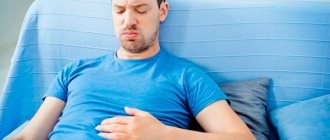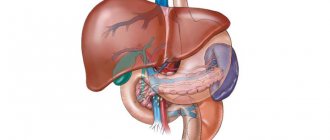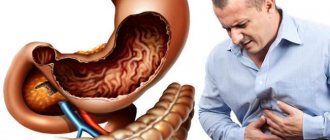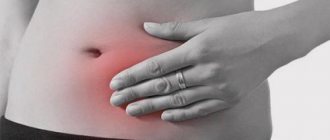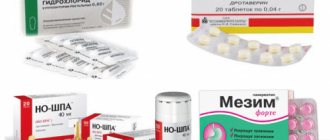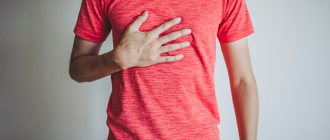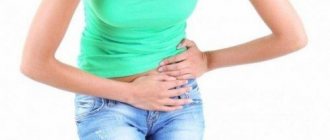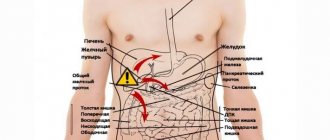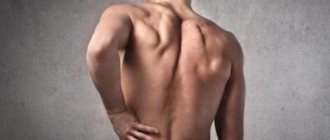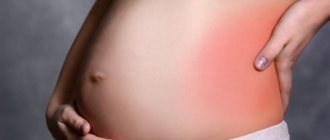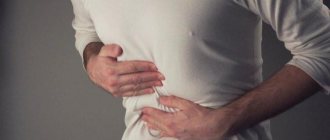Many people start running to stay healthy, and some even start participating in competitions. There is a lot of talk about the benefits of regular physical activity and there is research to back it up. But sometimes you may encounter difficulties during exercise in the form of abdominal pain during intense exercise. This pain may appear on the right or left. So why does your side hurt when running and what to do?
In fact, this symptom is familiar to many from childhood, when during games and catch-ups it could be “shot” in the side and it would take some time to catch your breath. This symptom is mentioned by Pliny the Elder and even Shakespeare. However, little attention has been paid to this issue. There were only mechanistic hypotheses about the occurrence of this condition. While athletes and people passionate about physical education are trying to find a solution to this problem.
Causes of pain in the left side
Pain in the left side can be functional or occur due to inflammation. To make a diagnosis, you need to have an idea of what organs may be involved in this process.
Subcostal area
Here are the left lobe of the liver, pancreas, stomach, spleen, part of the colon, small intestine, lower part of the lungs, diaphragm, heart. Unpleasant sensations in this area can be caused by diseases of the heart, lungs (pneumonia and pleurisy), stomach, spleen, pancreas, duodenum, intercostal neuralgia, diaphragmatic hernia. The digestive organs suffer not only from bacteria , but also from unhealthy diet, stress, and bad habits.
A rupture or bruise of the spleen is especially dangerous. The pain is sharp, characterized by the appearance of a bruise around the navel, a hematoma in the left side of the abdomen, colic can radiate to the back. In this case, it is necessary to call an ambulance.
Inflammation of the lungs can also be accompanied by dull pain in the left hypochondrium , aggravated by coughing. With pleurisy, they intensify not only during coughing, but also when changing body position and even when breathing.
Intercostal neuralgia is characterized by sharp pain in the side, which manifests itself even with the slightest movement or inhalation. Acute colic is observed with osteochondrosis and neuralgia, myalgia and injuries.
Stitching pain (usually in the muscles) can occur if the load is distributed incorrectly or if there is no preliminary warm-up before training.
Left side
Here are the intestines, kidneys, ureter, spleen, pancreas, stomach, genitals (uterus and ovaries in women, prostate and testes, testes in men). Most of the discomfort in this area is associated with the intestines.
Possible causes of pain in the left side:
- Colitis is accompanied by pain from flatulence, it is acute, cramping, and often occurs after eating. They may also be accompanied by false urges to empty the bowels, diarrhea, sometimes with mucus and blood.
- Nonspecific ulcerative colitis - pain is accompanied by general intoxication.
- Intestinal obstruction – pain does not depend on food intake and can occur at any time of the day. Their character is sharp and combative. If help is not provided, they may subside in 2-3 days. But this is not a recovery, but a complication. The clinical picture is complemented by constipation, bloating and asymmetry of the abdomen, nausea and repeated vomiting.
- Colon cancer - in advanced cases.
- Diseases of the genitourinary system - inflammation of the uterus and appendages, sexually transmitted diseases, intestinal infections, atypical appendicitis, cystitis, urethritis, endometriosis, ovarian cysts, tumors, ectopic pregnancy and menstrual irregularities. These pains can radiate to the lower back, anus and groin. Emergencies include torsion of an ovarian cyst and ectopic pregnancy. These pathologies require immediate hospitalization.
Diagnostics
To make an accurate diagnosis, a face-to-face examination and interview of the patient is performed, and the right side is palpated. Additional diagnostic methods are prescribed:
- general blood analysis
- biochemical blood test: amylase, lipase, leptin, detect deficiency conditions
- general urine analysis
- ultrasound examination of the peritoneum, liver, spleen to identify functional changes
- gastroscopy
- abdominal x-ray
- radionuclide scanning
- examine stool, perform functional tests
Patients with gastritis are recommended to undergo esophagogastroduodenoscopy, biopsy of the mucous membranes of the gastrointestinal tract, and examine gastric secretion.
Diagnosis of vena cava thrombosis is carried out using:
- Phlebography is an x-ray technique during which the doctor takes a series of images. To analyze the condition of the hepatic veins and their branches, a contrast agent is first administered.
- Superior and inferior cavagraphy - the patient is infused with a contrast agent, and an X-ray diagnosis of the inferior and superior vena cava is performed.
- Radionuclide diagnostics - radiopharmaceuticals are introduced into the body to assess the condition of internal organs.
- Urine, feces, general and biochemical blood tests.
- Ultrasound diagnostics of the peritoneum.
Pain in the right side can be caused by running, walking, intercostal neuralgia, myositis, osteochondrosis, and disruption of the integrity of bone tissue. To make an accurate diagnosis, differential diagnosis and an in-person examination by an experienced specialist are required.
Localization and nature of pain
Pain is divided according to the mechanism of its occurrence, as well as according to its characteristics. They can feel like cutting, stabbing, dull and sharp, drilling, bursting, shooting, aching and encircling.
Classification of pain by source of origin:
- Visceral - appears due to inflammatory processes, injuries and bleeding from internal organs. It is associated with peristalsis of the intestines and stomach, and occurs during spasms or strains of the muscles of these organs.
- Neurological – occurs when the nerve trunks become inflamed.
- Somatic – constant and clearly localized. The pain is sharp, cutting, appears due to irritation of the peritoneum, for example, with peritonitis.
- Reflected - spreads from distant organs along nerve fibers due to the irradiation of unpleasant sensations. It does not arise in the organs of the left side, but comes here. For example, with left-sided lower lobe pneumonia, pleurisy, heart attack, liver disease.
Classification by pain intensity:
- Acute – intense, cannot be relieved with analgesics.
- Chronic – periodically occurring low-intensity unpleasant sensations that are relieved by analgesics.
Back pain occurs with pleurisy and inflammation of the lung. Lower back pain may indicate kidney pathology.
Pain after eating is usually associated with digestion. They are characterized as heaviness, discomfort and tingling, and may be accompanied by fever, chills, nausea and gas formation. This may also indicate the development of disorders in the pancreas . More often than not, all this is associated with poor nutrition.
When there is aching and pulling on the left side below the ribs in front, this is a symptom of sluggish duodenitis (inflammation of the duodenum).
If it stings on the side under the left rib during training or strength training, then this indicates insufficient warm-up. The body simply did not have time to prepare for the increase in blood circulation. They pass quickly and have no consequences.
When the aorta ruptures, the pain is sudden, severe in the abdomen or from the back. Immediately after this, collapse occurs - a sharp drop in pressure. A person can die in a matter of minutes from bleeding. You need to call an ambulance without wasting a second.
Stones and sand in the urinary tract cause sharp pain because the tissue and capsule of the organ are stretched, pressure increases and pain occurs, mainly under the ribs in the back.
Possible complications
The lack of high-quality, timely assistance is fraught with complications.
- In patients with nephroptosis, the likelihood of developing arterial hypertension, pyelonephritis, and hydronephrosis increases.
- Jaundice and cholestasis are fraught with liver failure, encephalopathy, and sepsis.
- The acute course of calculous cholecystitis leads to purulent inflammation and tissue necrosis, the formation of biliary colic.
- Patients with appendicitis may develop peritonitis.
- Pancreatitis is complicated by false acidic pancreas, pancreatic necrosis, pancreatogenic ascites, pancreatic abscess, and pulmonary complications. The chronic form of the disease provokes endocrine disorders and diabetes.
- Gastritis can lead to ulcerative lesions of the gastrointestinal tract and the development of gastric bleeding.
- Hernias are fraught with strangulation, which is accompanied by severe pain, vomiting, lack of a swallowing reflex, pale skin, and disturbances of consciousness.
- Kinking of the gallbladder can lead to tissue necrosis. When the bladder ruptures, the bile is transformed into the peritoneal area, increasing the likelihood of developing peritonitis.
To reduce the risk of complications, it is recommended to follow all doctor’s instructions during conservative therapy and during the recovery period after surgery.
The left side hurts in a woman and a man: what are the differences?
In men, this may be a consequence of inflammation in the genitourinary system. As a rule, this is accompanied by an increase in temperature.
Sharp pain may indicate:
- prostatitis;
- vesiculitis
- inflammation in the bladder, urethra;
- stones in the prostate gland;
- malignant tumors;
- inguinal hernia;
- gonorrhea, chlamydia, trichomoniasis.
In women with endometriosis or an ovarian cyst, there is nagging pain (both on the left and on the right). Similar to menstrual ones, but appear at any time. And the periods themselves lengthen and become more painful.
Nagging pain in the lower abdomen in women indicates problems with the left ovary . They get worse when walking. Although this may be due to inflammation of the fallopian tubes and uterine mucosa, and oncology.
In women, pain in the left side of the lower abdomen may occur during pregnancy due to intestinal displacement by the growing uterus. There is no danger if it does not become acute and is not accompanied by spotting and bloody discharge.
If your left side hurts, what should be the algorithm of action?
Even if the pain under the ribs, on the left, below, in the navel area or in the center quickly subsides, but is accompanied by vomiting, burning, fever, an ambulance should definitely be called. Any intake of food, water, or pills is not advisable. All this can blur the picture, complicating the diagnosis.
If a rare pain syndrome occurs, you can take painkillers. However, this method is optimal only if the pain is not accompanied by acute symptoms, such as fever, chills and nausea.
Important! Seeing a doctor is mandatory if the pain recurs and all the remedies used are useless.
Treatment
The treatment regimen is selected after identifying the underlying factor that causes pain.
| Nephroptosis | In the initial stages, conservative therapy is indicated:
Complications and late stages of the pathological process are an indication for surgical intervention. |
| Appendicitis | Surgical removal of the appendage |
| Pancreatitis | Acute form of the disease:
Chronic form: diet, painkillers, replacement therapy, vitamin complexes. Diabetes mellitus and cholelithiasis are treated in a timely manner. |
| Cholestasis | Conservative therapy:
Lack of effect from conservative therapy is an indication for surgical intervention. |
| Bend of the gallbladder |
If conservative measures are ineffective, surgical intervention is indicated. |
| Calculous cholecystitis | To reduce exacerbation the following is prescribed:
According to indications, stones are removed. |
| Gastritis |
|
| Inguinal hernia |
|
| Hiatal hernia | At the initial stage, pathologists recommend correction of diet and lifestyle. As the disease progresses, surgical repair of the hernial orifice followed by removal of the affected segments is performed. |
| Vena cava thrombosis |
|
The patient is advised to strictly follow all the doctor’s recommendations, take medications according to the instructions, and undergo a course of physical therapy. After surgery, they recover under the supervision of a rehabilitation physician.
Prevention
As for prevention, the basis is a proper balanced diet. It is advisable to minimize hot and spicy foods. Legumes can irritate the mucous membranes and cause flatulence.
It is important to give up bad habits such as smoking and alcohol , get proper rest and get a good night's sleep. Any training should be carried out only 1.5-2 hours after eating.
To avoid gynecological problems, women need to treat existing inflammation of the genital organs and undergo regular examinations by a gynecologist.
Doctors' advice
Doctors strongly recommend:
- Do not engage in self-diagnosis and treatment.
- In case of acute pain, do not endure it, but call an ambulance. This is the case when it is better to be safe.
- If the pain is not intense, dull, then it is better to consult a doctor at the clinic. You need to describe all your sensations without any embarrassment.
There is no need to assume that the pain in the left side will go away on its own; it is better to consult a doctor and identify the true cause. Taking painkillers gives only a temporary effect, but does not eliminate the disease itself. If pain occurs suddenly and lasts more than half an hour, it is better to play it safe and call an ambulance.
Forecast
The prognosis depends on the cause of the pain, the degree of progression of the pathological process, associated complications, and the age of the patient. With pancreatitis, the lack of timely treatment is fraught with endocrine disorders and diabetes mellitus. The earlier treatment of the disease begins, the more favorable the prognosis. Preventive medicine makes it possible to identify disorders at an early stage, at the cellular level, and correct deficient conditions and disorders that cause pathology. Pain in the right hypochondrium may portend a dangerous pathological process, so the symptom cannot be ignored.
